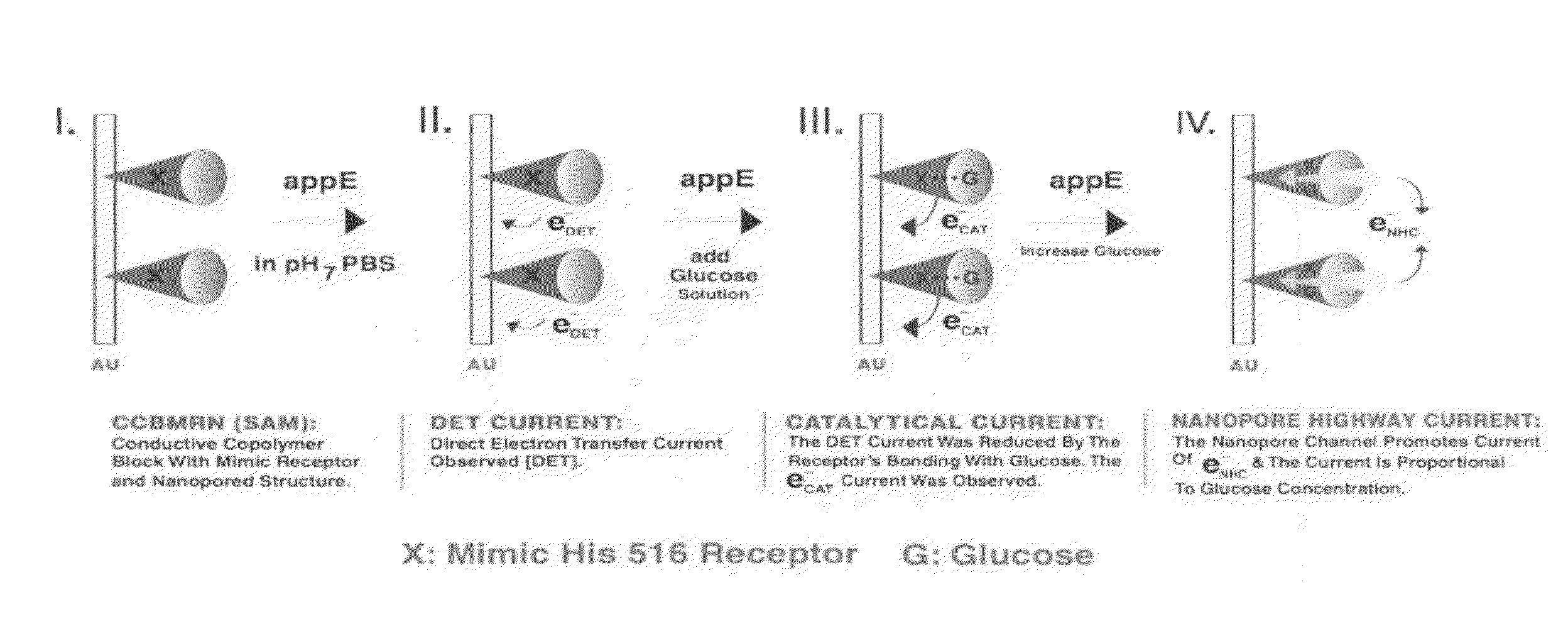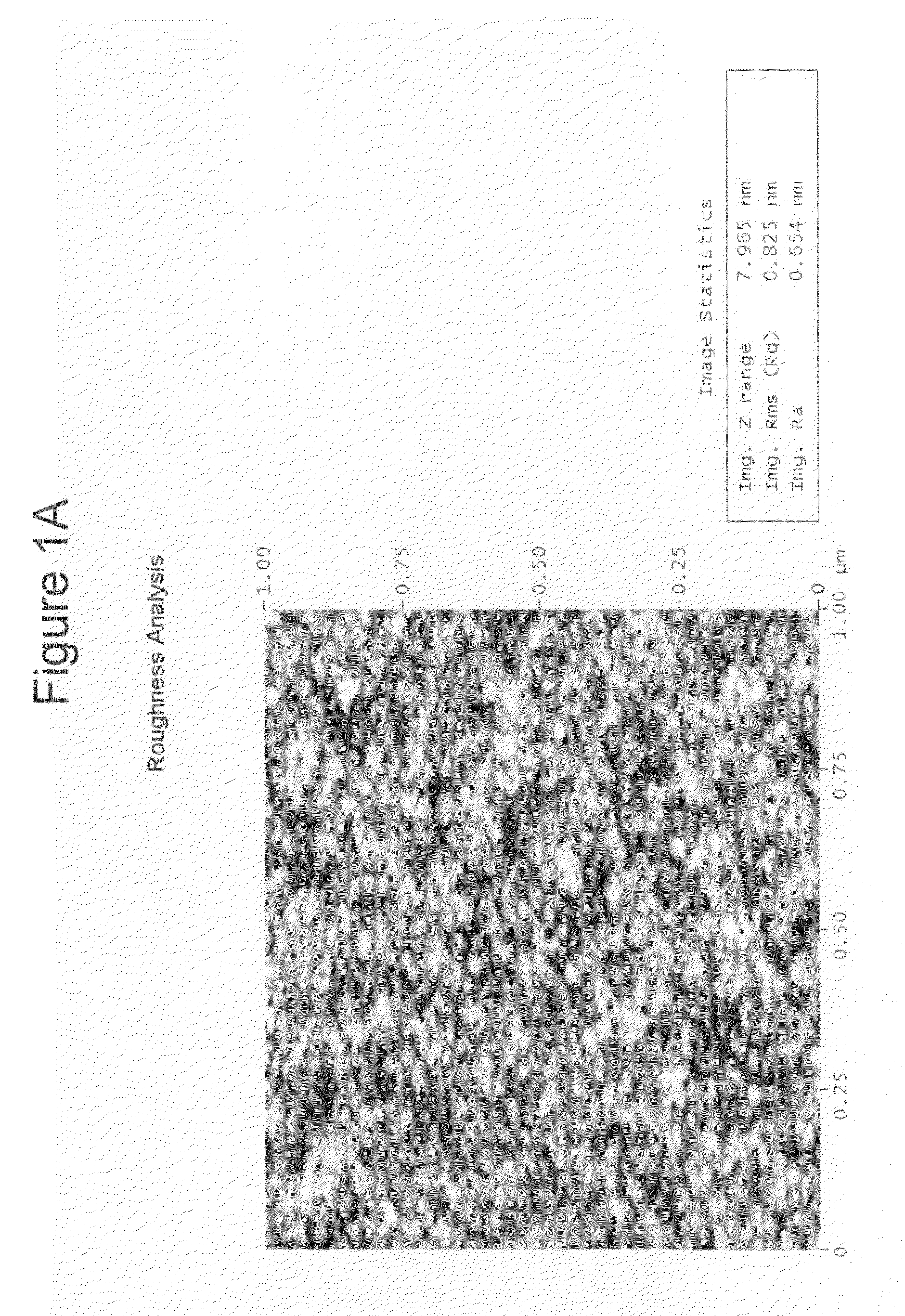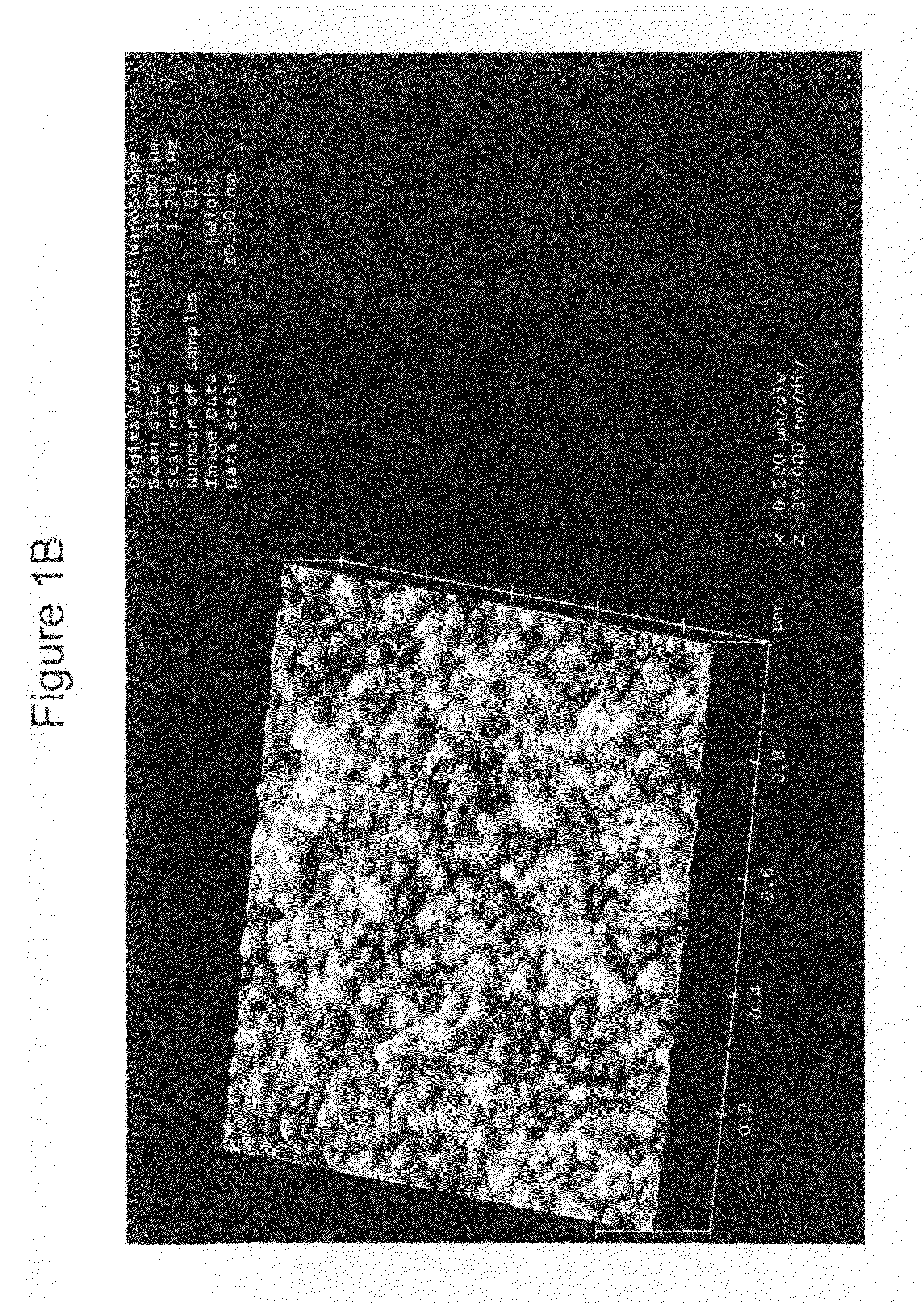Nanopore structured electrochemical biosensors
a biosensor and nanopore technology, applied in the field of biosensors, can solve the problems of insufficient robustness, limited development of glucose sensor technology, and insufficient development stage of technology, so as to avoid biofouling and denaturation, improve the efficiency of the process, and improve the effect of sensitivity
- Summary
- Abstract
- Description
- Claims
- Application Information
AI Technical Summary
Benefits of technology
Problems solved by technology
Method used
Image
Examples
example 1
Constructing the Biosensor
[0031]Reagent grade poly (4-vinylpyridine) (PVP), polyethylene glycol diglycidyl ether (PEG), triacetyl-β-CD (T-β-CD), β-CD / epichlorohydrin, β-D-glucose were purchased from Aldrich-Sigma. The PVP was recrystallized in methanol. The biomimetic glucose enzyme, which is a biomimetic Histidine residue (His-516) receptor of glucose oxidase and mimics the active center of native glucose enzyme, named mM-β-DMCD was synthesized generally according to the published procedures (E. T. Chen and H. L. Pardue, Analytical applications of catalytic properties of modified-cyclodextrins. Anal. Chem. 65, 2563-2567, 1993, which is hereby incorporated by reference in its entirety as if set forth herein). U.S. Pat. No. 6,582,583 issued on Jun. 24, 2003 is also hereby incorporated by reference in its entirety as if set forth herein. Briefly, β-DMCD may be reacted first with sodium hydride in dry tetrahydrofuran under a nitrogen atmosphere at 35-38° C. for 10 hours. The solution i...
example 2
AFM Measurements
[0040]A clean bare gold chip with 50 nm thickness and 3 mm diameter was purchased (GeneFluidics, CA) for fabrication of the CD-SAM. Pretreatment of the chip before the fabrication is not necessary based on the AFM image of the bare gold surface. The same procedures and chemical mixtures as above were used to fabricate the gold CD-SAM chip in the clean room for the AFM measurements. The morphology of the three CD-SAMs against a bare gold electrode was characterized by using an instrument (Digital Instruments Dimension 3100 Atomic Force Microscope, Veeco Instruments, Santa Barbara, Calif.). The nanopore sizes were measured using TappingMode™ AFM with a silicon cantilever and tip with a 300 kHz resonance frequency and a 5-10 nm tip radius (Model TESP by VeecoProbes). The software used was NanoScope versions 5.30rl.
[0041]The first reported nanopore structured biomimetic CD-SAM was shown in FIG. 1A (two dimensional view, roughness measurement), FIGS. 1B and 1C (3D view), ...
example 3
Electrochemical Measurements
[0042]A voltammetric analyzer (model CV50W, Bioanalytical System (BAS), IN) was used for the measurements of currents. A Faraday low current cage (model C2, BAS) was used for protection of the electrode cell. For the pH effect study and for the glucose measurements, the scan rate was kept constant at 50 mv / s. All electrochemical measurements were done in an unstirred electrochemical cell at 20°C. All sample solutions were bubbled thoroughly with high purity N2 for 10 minutes and maintained in a N2 blanket. The 0.1 M, pH 7.0±0.1 buffer ((0.1 M KCl) solution was filtrated and degassed. The electrodes were equilibrated in a 10 mL, pH 7.0±0.1, 0.1 M buffer (0.1 M KCl) for 30-45 minutes by applying a potential at −400 mv until a steady-state current was observed before a sample can be measured.
[0043]The internal standard addition method was used to study the accuracy of glucose measurements using bovine serum albumin (BSA). The current for a 50 mg / dL glucose s...
PUM
| Property | Measurement | Unit |
|---|---|---|
| pore size | aaaaa | aaaaa |
| roughness | aaaaa | aaaaa |
| pore height | aaaaa | aaaaa |
Abstract
Description
Claims
Application Information
 Login to View More
Login to View More - R&D
- Intellectual Property
- Life Sciences
- Materials
- Tech Scout
- Unparalleled Data Quality
- Higher Quality Content
- 60% Fewer Hallucinations
Browse by: Latest US Patents, China's latest patents, Technical Efficacy Thesaurus, Application Domain, Technology Topic, Popular Technical Reports.
© 2025 PatSnap. All rights reserved.Legal|Privacy policy|Modern Slavery Act Transparency Statement|Sitemap|About US| Contact US: help@patsnap.com



